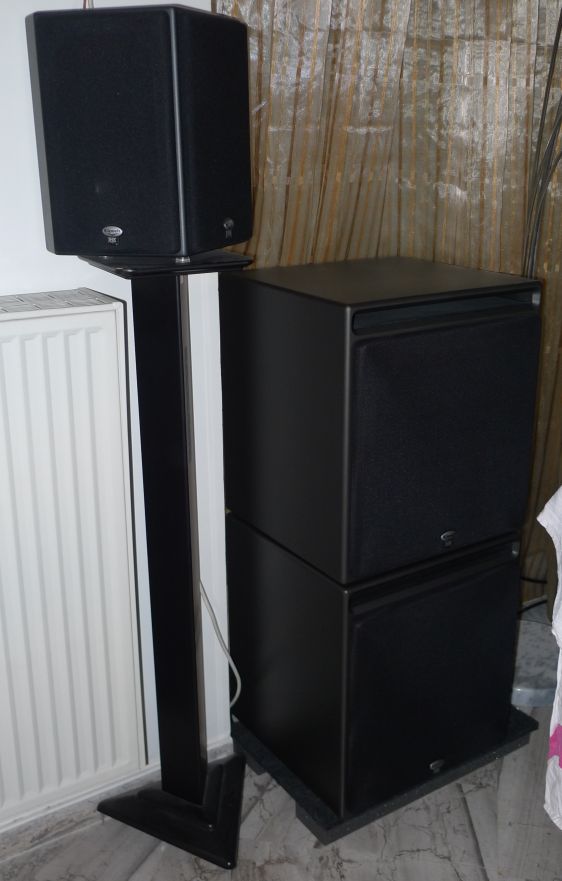argi
"Επαγγελματίας"
- Μηνύματα
- 30.020
- Reaction score
- 6.879
Αν και καπου το εχω ξανανεβασει εδω βλεπουμε τις βασικες διαφορες απο τα κλασικα διπολα ηχεια.
Klipsch Wide Dispersion Surround Technology surround speakers take a different approach to surround coverage than dipole and bipole surrounds.
A Dipole models place drivers out of polarity to create a null on one axis of the speaker. It is popular to sit in the null, thus the loudest sounds come from indirect radiation from the speaker. A dipole, used in this manner creates a diffuse and non-localized rear sound field.
1) Some drawbacks to dipole surrounds include that the rear sound field is not confined to the rear. As much radiation is radiated forward as rearward.
A Dipole models place drivers out of polarity to create a null on one axis of the speaker. It is popular to sit in the null, thus the loudest sounds come from indirect radiation from the speaker. A dipole, used in this manner creates a diffuse and non-localized rear sound field.
1) Some drawbacks to dipole surrounds include that the rear sound field is not confined to the rear. As much radiation is radiated forward as rearward.
2) A dipole also depends on other surfaces in the room to reflect the sound to the listener.
3) A dipole can only create a diffuse rear sound field.
4) Finally, a dipole is very inefficient at low frequencies, as the out of phase bass cancels.
B Bipole models place drivers on several faces, with the idea that the radiation is equal in all directions, like a point source.
1) The problem is that the drivers interact, and actually radiate sound very erratically, with a different frequency response in each direction.
2) The sound field created is not coherent and as a result is not very realistic.
C) Klipsch WDST surrounds are very much like a professional concert array. The high frequencies, made directional by the horn, are arrayed at the proper angles to provide even coverage, or with the same frequency response in all directions. The single woofer is crossed over where it is omni directional, thus creating a system that truly radiates sound equally in all directions.
1) WDST models provide balanced direct and reverberant sound field to listeners. Since the response is the same in all directions, the reverberant sound filed reaching the listeners from other directions, is balanced spectrally with the direct sound, creating a coherent, realistic rear sound field.3) A dipole can only create a diffuse rear sound field.
4) Finally, a dipole is very inefficient at low frequencies, as the out of phase bass cancels.
B Bipole models place drivers on several faces, with the idea that the radiation is equal in all directions, like a point source.
1) The problem is that the drivers interact, and actually radiate sound very erratically, with a different frequency response in each direction.
2) The sound field created is not coherent and as a result is not very realistic.
C) Klipsch WDST surrounds are very much like a professional concert array. The high frequencies, made directional by the horn, are arrayed at the proper angles to provide even coverage, or with the same frequency response in all directions. The single woofer is crossed over where it is omni directional, thus creating a system that truly radiates sound equally in all directions.


